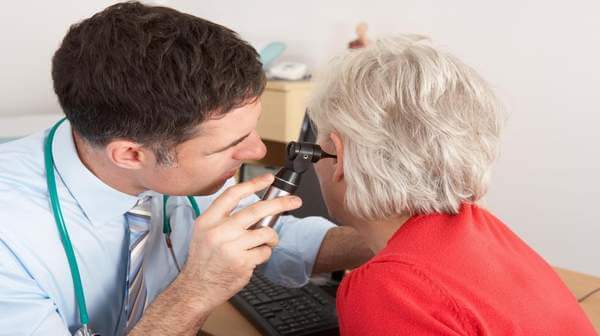What's in this article?
Ear Barotrauma Overview
Airplane ear is the stress exerted on your eardrum and other middle ear tissues when the air pressure in your middle ear and the air pressure in the environment are out of balance. You may experience airplane ear at the beginning of a flight when the airplane is climbing or at the end of a flight when the airplane is descending. These fast changes in altitude cause air pressure changes and can trigger airplane ear.
Airplane ear is also called ear barotrauma, barotitis media or aerotitis media.
Usually self-care steps such as yawning, swallowing or chewing gum can prevent or correct the differences in air pressure and improve airplane ear symptoms. However, a severe case of airplane ear may need to be treated by a doctor.
Ear Barotrauma Symptoms
Ear barotrauma is marked by an uncomfortable pressure inside the ear. Symptoms may include:
- ear pain
- general ear discomfort
- stuffiness of ears
- decreased hearing
Airplane ear can occur in one or both ears. Airplane ear signs and symptoms may include:
- Moderate discomfort or pain in your ear
- Feeling of fullness or stuffiness in your ear
- Muffled hearing or slight to moderate hearing loss
If airplane ear is severe or lasts more than a few hours, you may experience:
- Severe pain
- Pressure in your ear similar to being underwater
- Moderate to severe hearing loss
- Ringing in your ear (tinnitus)
- Spinning sensation (vertigo)
- Vomiting resulting from vertigo
- Bleeding from your ear
Causes of Ear Barotrauma
Eustachian tube blockage is the direct cause of ear barotrauma. This tube may have a fancy name, but it actually helps to restore equilibrium during changes in pressure. For example, yawning is controlled in the ears through the Eustachian tube. When the tube is blocked, symptoms persist because the pressure in the ear is now different than the pressure just outside of your eardrum.
Altitude changes are the most common cause of this condition. In fact, according to the American Academy of Otolaryngology, ear barotrauma is the most common medical issue on airplanes.(AAO, 2010).
Other causes include:
- scuba diving
- hiking
- driving through mountains
- ear infections
- eardrum ruptures
Risk factors of Ear Barotrauma
Any condition that blocks the eustachian tube or limits its function can increase the risk of airplane ear. Common risk factors include:
- A small eustachian tube, especially in infants and toddlers
- The common cold
- Sinus infection
- Hay fever (allergic rhinitis)
- Middle ear infection (otitis media)
- Sleeping on an airplane during ascent and descent
Frequent or severe airplane ear may damage the tissues of the inner ear or eustachian tube, which increases your chances of experiencing the problem again.
Diagnosing Ear Barotrauma
- History: Symptoms may include a temporary ringing in the ear (tinnitus). Ears may feel full, and hearing may be impaired. A plugged feeling in the ear, mild-to-severe pain in the ears or over the cheekbones and forehead, and dizziness (vertigo) may also occur.
- Physical exam: The exam may reveal a perforated eardrum (tympanic membrane) with fluid accumulation, or the membrane may have a purplish hue. An ear inspection may show a slight outward bulge or inward retraction of the eardrum.
- Tests: There are no laboratory or other tests required to establish this diagnosis.
Ear Barotrauma Treatment
Most cases of ear barotrauma generally heal without medical intervention. You can help relieve air pressure by:
- yawning
- chewing gum
- using breathing exercises
- taking antihistamines or decongestants
In severe cases, your doctor may prescribe an antibiotic or a steroid to help clear the problem.
Chronic cases of ear barotrauma may be aided with the help of ear tubes. These small cylinders are positioned right through the eardrum to stimulate airflow into the middle of the ear. Ear tubes can help prevent infections from barotrauma, and they are most commonly used in children.
In some cases, ear barotrauma is a sign of a ruptured eardrum. A ruptured eardrum can take up to two months to heal. Symptoms that don’t respond to self-care may require surgery to prevent permanent damage to the eardrum.






Hello. remarkable job. I did not expect this. This is a splendid story. Thanks!